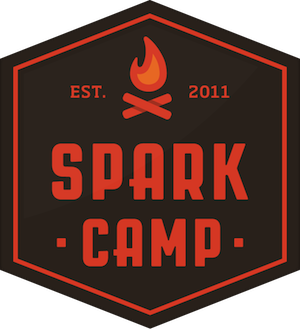 Editor’s Note: What were the most interesting and provocative ideas in journalism in 2012? We’re partnering with Spark Camp to produce a special end-of-year series to ask a group of smart people — Spark Camp’s alumni — that question. (Learn more about Spark Camp at the first post in this series.) Here are thoughts from:
Editor’s Note: What were the most interesting and provocative ideas in journalism in 2012? We’re partnering with Spark Camp to produce a special end-of-year series to ask a group of smart people — Spark Camp’s alumni — that question. (Learn more about Spark Camp at the first post in this series.) Here are thoughts from:
— Jonathan Stray, longtime Nieman Lab contributor and project lead for the Overview Project, an open-source document archive analysis system for investigative journalists, a project of the Associated Press and the Knight Foundation.
— Meredith Artley, managing editor and vice president of CNN Digital. Before coming to CNN, Artley was executive editor of LATimes.com and editor and director of IHT.com. She’s on the boards of the Online News Association and the Global Editors Network.
— John Davidow, executive editor for digital at WBUR in Boston. He is also the recipient of a 2010 Knight News Challenge award for WBUR’s OpenCourt.us, an effort to open up courtroom proceedings to the wider public.
 Nate Silver’s successful election predictions exposed an awkward fact: Journalism hasn’t quite come to grips with certain important ways of finding truth — such as statistics.
Nate Silver’s successful election predictions exposed an awkward fact: Journalism hasn’t quite come to grips with certain important ways of finding truth — such as statistics.
There were enormous advances in truth-finding techniques in the 20th century — the controlled experiment, modern sociology, Bayesian statistics, the experimental demonstration of cognitive biases. Journalists typically aren’t taught these techniques, especially the quantitative ones.
As both information and misinformation become far more widely available, journalists are being called to “move up the food chain” and pass judgment on what is truth. The fact-checking movement demonstrates this. But without the right training, there will be certain topics where journalists won’t be any better at knowing what is true than anyone else. Quotes from an expert will no longer cut it — not least because the expert is often speaking publicly anyway.
What Silver did was make it obvious that there was a better way of knowing than the pundits.
These tools for knowing probably won’t apply to most stories, but they will apply to some. When there is a need for certain kinds of understanding, I want journalists to know of the existence and the uses of these remarkable ways of figuring something out. I want them to be able to produce state-of-the-art critiques of knowledge — and equally, to be able to understand and admit when something can’t actually be known. Just as crucially, they need to be able to explain the logic of their knowledge to the audience, and listen to criticism honestly.
This isn’t to say the path forward is obvious. It’s often unclear how tools from other disciplines can be applied within the demands of news production, and there will be a balance between journalists applying the tools themselves versus curating sources that do. It’s all a brand new territory to explore.
 There were many great threads this election year, but what jumps out to me is how stunningly social the election was, with narratives and memes exploding with every soundbite.
There were many great threads this election year, but what jumps out to me is how stunningly social the election was, with narratives and memes exploding with every soundbite.
Responsive design gained more steam. There was the resurgence and triumph of the animated GIF. And lots of innovations around video, like HuffPost Live — and I’m naturally partial to CNN’s debate video experience with the live clip-and-share feature.
BuzzFeed had a quite a year – they seem to be having a lot of fun over there and made great hires like Kate Aurthur and Richard Rushfield out in L.A. and Dao Nguyen as director of growth. They are an organization to watch.
My hope is that we’ll see more story-form experimentation in 2013. We have all these different formats in the mix nowadays — social forms, big data viz and multimedia projects, GIFs, galleries, lists, and so on — but the default storytelling vehicle for most orgs is still a newspaper-esque article plus photo or video, maybe with some comments at the bottom. We’re going to take a renewed push at this at CNN Digital this year, and I hope others join us.
And with social and mobile coming on stronger than ever, some expansive thinking and action around conversational, interactive journalism is a must. We see more than ever that stories are active, evolving, connected conversations that ripple beyond the point of origin.
I’m enjoying reading the Tow Center report from Emily Bell and gang on post-industrial journalism; it contains thoughts worth contemplating over the holidays and carrying into 2013, starting with summing up the past decade in our industry as: “Everybody suddenly got a lot more freedom.”
 This year, I think that the CPB-funded initiative to create a race and ethnicity vertical with NPR will provide a much needed spark for years to come. Whether one is talking about politics, economics, education, art, music, love, or life, this new initiative will provide a platform for thoughtful coverage and engagement on the central role diversity plays in all of our lives. I’d be remiss in not giving a special shout out to NPR’s Ellen McDonnell, Keith Woods, and Spark Camp cofounder Matt Thompson for their effort and initiative to make this project a reality in 2012.
This year, I think that the CPB-funded initiative to create a race and ethnicity vertical with NPR will provide a much needed spark for years to come. Whether one is talking about politics, economics, education, art, music, love, or life, this new initiative will provide a platform for thoughtful coverage and engagement on the central role diversity plays in all of our lives. I’d be remiss in not giving a special shout out to NPR’s Ellen McDonnell, Keith Woods, and Spark Camp cofounder Matt Thompson for their effort and initiative to make this project a reality in 2012.
The most-hyped idea from 2012? The problems with the iPhone 5. I think the Saturday Night Live Tech Talk segment captured perfectly the hipster hype, hysteria, and hypocrisy. It’s definitely worth another look before year’s end.